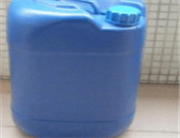1/5
Sorafenib tosylate
- Min. Order100g
- Purity99%
- Cas No284461-73-0
- Supply Ability20 Tons
- Update time2020-11-16
Since:2019-10-11
Address:Room 201, 11 Xinhouying Road, Xicheng Lian, Xinluo District, Longyan City, Fujian Province, China
| Product Name | Sorafenib tosylate |
| CAS No | 284461-73-0 |
| EC-No | 608-209-4 |
| Min. Order | 100g |
| Purity | 99% |
| Supply Ability | 20 Tons |
| Release date | 2020/11/16 |


Figure 1 the chemical structure of sorafenib;
The antiproliferative activity of sorafenib is variable in different tumor types and largely depends on the oncogenic signaling pathways that mediate tumor proliferation. Sorafenib has also been shown to induce apoptosis in several tumor cell lines. Although the mechanism through which sorafenib induces apoptosis is not fully elucidated and may vary between cell lines, a commonly observed theme is the inhibition of phosphorylation of the initiation factor eIF4E and loss of the antiapoptotic protein myeloid cell leukemia-1 (MCL-1)[5]. Recently, sorafenib was shown to inhibit hepatitis C viral replication in vitro[6], and in vitro studies have also shown some direct effects on immune cells [7]. Whether these effects
Across all tumor types, common side effects (> 10%) include hypertension (9 -13%, grade 4: < 1%; onset: ~ 3 weeks), fatigue (37 -46%), sensory neuropathy (13%), pain (11%), rash/desquamation (19 -40%; grade 3: 1%), handfoot syndrome (21 -30%; grade 3: 6 -8%), alopecia (14 -27%), pruritis (14 -19%), dry skin (10 -11%), hypoalbuminemia (59%), hypophosphatemia (35 -45%; grade 3: 11 -13%; grade 4: < 1%), diarrhea (43 -55%; grade 3: 2 -10%; grade 4: < 1%), lipase increased (40 -41%, usually transient), amylase increased (30 -34, usually transient), abdominal pain (11 -31%), weight loss (10 -30%), anorexia (16 -29%), nausea (23 -24%), vomiting (15 -16%), constipation (14 -15%), muscle pain, weakness, dyspnea (14%), cough (13%) and hemorrhage (15 -18%; grade 3: 2 -3%; grade 4: 2%). Laboratory abnormalities attributable to sorafenib use are also seen and include lymphopenia (23 -47%; grades 3/4: 13%), thrombocytopenia (12 -46%; grades 3/4: 1 -4%), international normalized ration (INR) increased (42%), neutropenia (18%; grades 3/4: 5%), leucopenia, liver dysfunction (11%; grade 3: 2%; grade 4: 1%).
Less frequent side effects (> 1 -10) include cardiac ischemia/infarction (3%), flushing, headache (10%), depression, fever, acne, exfoliative dermatitis, decreased appetite, dyspepsia, dysphagia, esophageal varices bleeding (2%), glossodynia, mucositis, stomatitis, xerostomia, erectile dysfunction, anemia, transaminases increased (transient), joint pain (10%), arthralgia, myalgia, hoarseness and flu-like syndrome.
Rare (< 1%) side effects of sorafenib include acute renal failure, alkaline phosphatase increased, arrhythmia, bilirubin increased, bone pain, cardiac failure, cerebral hemorrhage, congestive heart failure, dehydration, eczema, epistaxis, erythema multiforme, folliculitis, gastritis, gastrointestinal hemorrhage, gastrointestinal perforation, gastrointestinal reflux, gynecomastia, hypersensitivity (skin reaction, urticaria), hypertensive crisis, hyponatremia, hypothyroidism, infection, jaundice, myocardial infarction (MI), mouth pain, myocardial ischemia, pancreatitis, pleural effusion, preeclampsialike syndrome (reversible hypertension and proteinuria), renal failure, respiratory hemorrhage, reversible posterior leukoencephalopathy syndrome (RPLS), rhinorrhea, skin cancer (squamous cell/keratoacanthomas), thromboembolism, tinnitus, transient ischemic attack, tumor lysis syndrome, tumor pain and voice alteration.
- El-Serag HB, Rudolph KL. Hepatocellular carcinoma: epidemiology and molecular carcinogenesis. Gastroenterology 2007 Jun; 132 (7): 2557-76
- Adnane L, Trail PA, Taylor I, et al. Sorafenib (BAY 439006, Nexavar), a dual-action inhibitor that targets RAF/MEK/ERK pathway in tumor cells and tyrosine kinases VEGFR/PDGFR in tumor vasculature. Methods Enzymol 2005; 407: 597-612
- Wilhelm S, Carter C, Lynch M, et al. Discovery and development of sorafenib: a multikinase inhibitor for treating cancer. Nat Rev Drug Discov 2006 Oct; 5 (10): 835-44
- Wilhelm SM, Carter C, Tang LY, et al. BAY 43-9006 exhibits broad spectrum oral antitumor activity and targets the RAF/MEK/ERK pathway and receptor tyrosine kinases involved in tumor progression and angiogenesis. Cancer Res 2004 Oct 1; 64 (19): 7099-109
- Yu C, Bruzek LM, Meng XW, et al. The role of Mcl-1 downregulation in the proapoptotic activity of the multikinase inhibitor BAY 43-9006. Oncogene 2005;24:6861-9
- Himmelsbach K, Sauter D, Baumert TF, et al. New aspects of an anti-tumour drug: sorafenib efficiently inhibits HCV replication. Gut 2009;58:1644-53
- Molhoek KR, McSkimming CC, Olson WC, et al. Apoptosis of CD4(+) CD25(high) T cells in response to Sirolimus requires activation of T cell receptor and is modulated by IL-2. Cancer Immunol Immunother 2009;58:867-76
- Strumberg D, Richly H, Hilger RA, et al. Phase I clinical and pharmacokinetic study of the Novel Raf kinase and vascular endothelial growth factor receptor inhibitor BAY 43-9006 in patients with advanced refractory solid tumors. J Clin Oncol 2005;23:965-72
- Clinical Pharmacology and Biopharmaceutics NDA Review for Sorafenib Tosylate (NDA 21 923), F.C.F.D.E.A. RESEARCH, Editor, 2005
- BAY 43-9006 (sorafenib) Investigator’s Brochure. Bayer Healthcare AG,Version 10.0, July 1, 2009
- European Medicines Agency. Sorafenib (Nexavar): summary of product characteristics [online].
- Blanchet B, Billemont B, Barete S, et al. Toxicity of sorafenib: clinical and molecular aspects. Expert Opin Drug Saf 2010;9:275-87
- https://www.drugs.com/cdi/sorafenib.html
Company Profile Introduction
Longyan Tianhua Biological Technology Co., Ltd is located in Longyan city, Fujian Province, China. It is a large-scale high-tech integrated enterprise dedicated to the research, development and sales of fine chemicals, pharmaceutical raw material intermediates, food and feed additives. The company has its own research and development base, equipped with advanced production equipment and efficient and precise testing instruments, has set up a strict and scientific quality management system, and constantly committed to technological innovation, product innovation and management innovation, so as to ensure that our products have super competitiveness in the same industry.? Company's main: Phenformin Hydrochloride, Chlorhexidine Acetate, Indomethacin Biphenyl benzyl azole dyclonine hydrochloride clorprenaline hydrochloride griseofulvin chloramphenicol maleic acid to guangxi pp qi, fucus xanthine tert-butyl of hydroxy anisole (BHA), ammonia, benzene pteridine zonisamide moxifloxacin mother nucleus moxifloxacin side chain moxifloxacin hydrochloride clobetasol propionate tranexamic acid raw material, and so on.? The annual sales volume of the company is around 3 million DOLLARS. Its products have been sold to more than 40 countries and regions all over the world, and have been well received. Moreover, the buyback rate of customers is very high. Longyan Tianhua Biotechnology Co., LTD. Is looking forward to long-term cooperation with you.
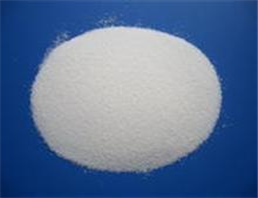

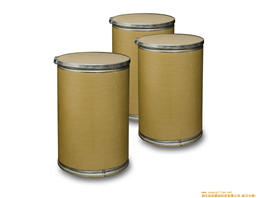
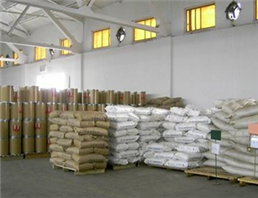

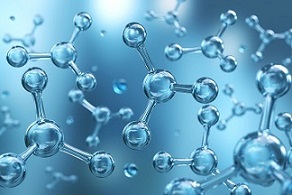
 China
China